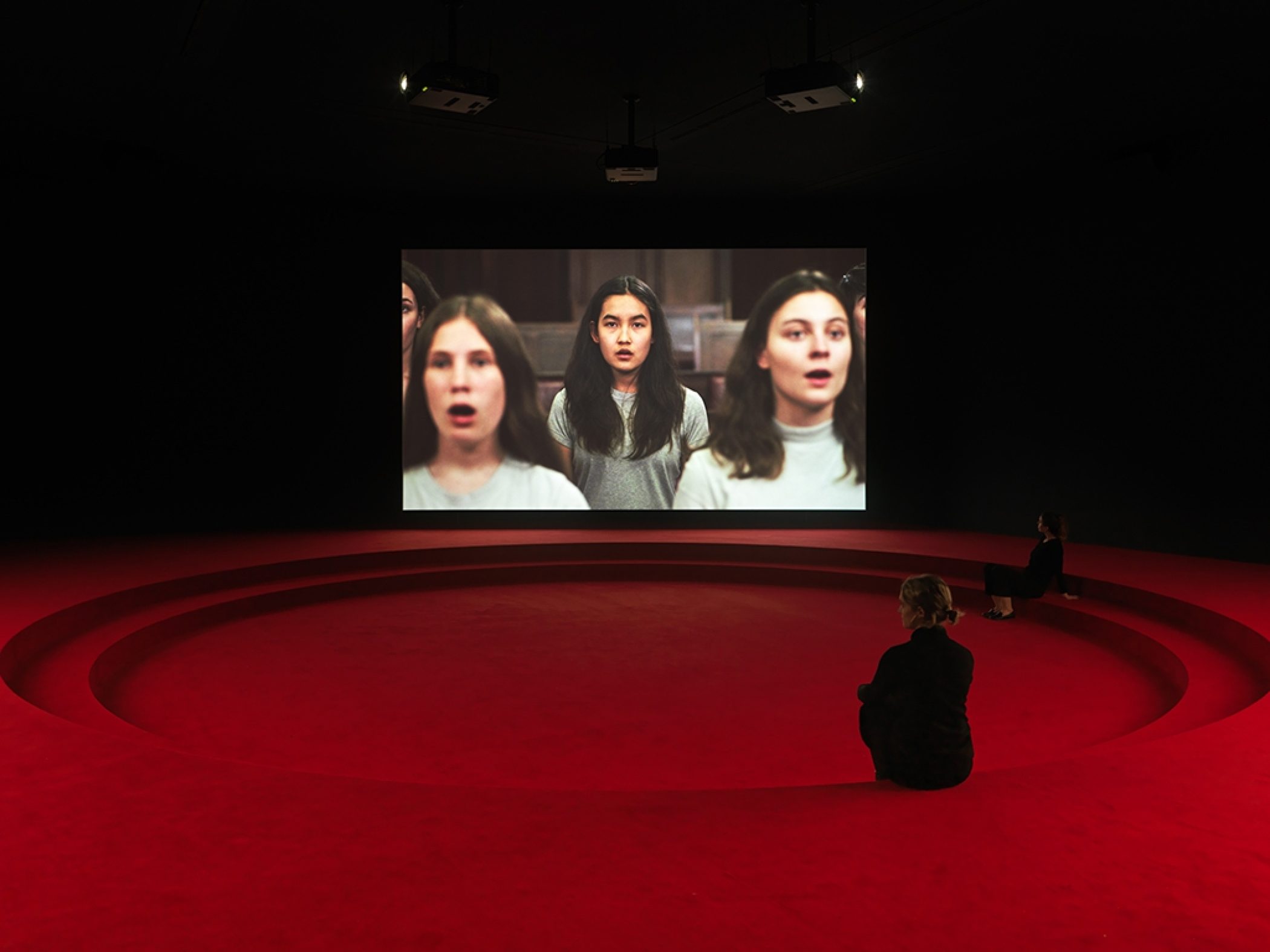Angelica Mesiti
ASSEMBLY
11th May – 24th November 2019
58th International Art Exhibition - la Biennale di Venezia
Angelica Mesiti’s three-channel video installation, ASSEMBLY, curated by Juliana Engberg, continues the artist’s ongoing concerns, foremost the subject and practice of translation which occurs in a variety of contexts throughout her work. This is expressed as movement from verbal and written language to non-verbal, gestural and musical translations, as is apparent in her current exhibition, When doing is saying, at the Palais de Tokyo in Paris.
ASSEMBLY is located in two government buildings – the Italian Senate in Rome, and the Old Parliament House in Canberra – in which a number of performances by a vast and diverse cast are staged.
Evolving from an encounter at a flea market, where Mesiti first discovered the Michela machine (a 19th century stenographic machine, modelled on a piano keyboard, used in the Italian Senate for official parliamentary reporting to ensure transparency within the democratic process), the work rests on a translated text. The poem, ‘To Be Written in Another Tongue’, by Australian writer David Malouf, has been translated into music by by Russian born, Australian composer, Max Lyandevat, through the Michela, and the first performance in the work is by a senate stenographer, who ‘plays’ the translated poem/score.
As the work evolves, the score is then adapted and performed by an ensemble of musicians located in separate spaces. It becomes a polyphonic experience as the poem’s translation is elaborated – developing the composition; every participant different, yet hospitable to the others’ notes. Initially the musicians play instruments from the Western European tradition, but are soon replaced by musicians from non-western traditions, and dancers, who perform various choreographed movements, some deriving from a universal body language established for the Occupy movement, now used in protests and political happenings.
The final ensemble includes a large cast of Australians with ancestries of Italian, Ukrainian, Lebanese, Jewish, Greek, English, Irish, Filipino, Korean, Russian, Scottish, Scandinavian, Sri Lankan, Anglo New Zealand, Iranian, Pakistani, Vietnamese and Indigenous Australian.
Mesiti says of the work: “Through both the metaphor of translation and the act itself, I am exploring the very human and increasingly urgent need we have to assemble in a physical way, in a physical space, in these complex times”.
Images

Angelica Mesiti
ASSEMBLY, three-channel video installation in architectural amphitheater HD video projections, colour, six-channel mono sound
25 minutes
Installation view, Australian Pavilion
Commissioned by the Australia Council for the Arts on the occasion of the 58th International Art Exhibition – La Biennale di Venezia
Photo: Josh Raymond
